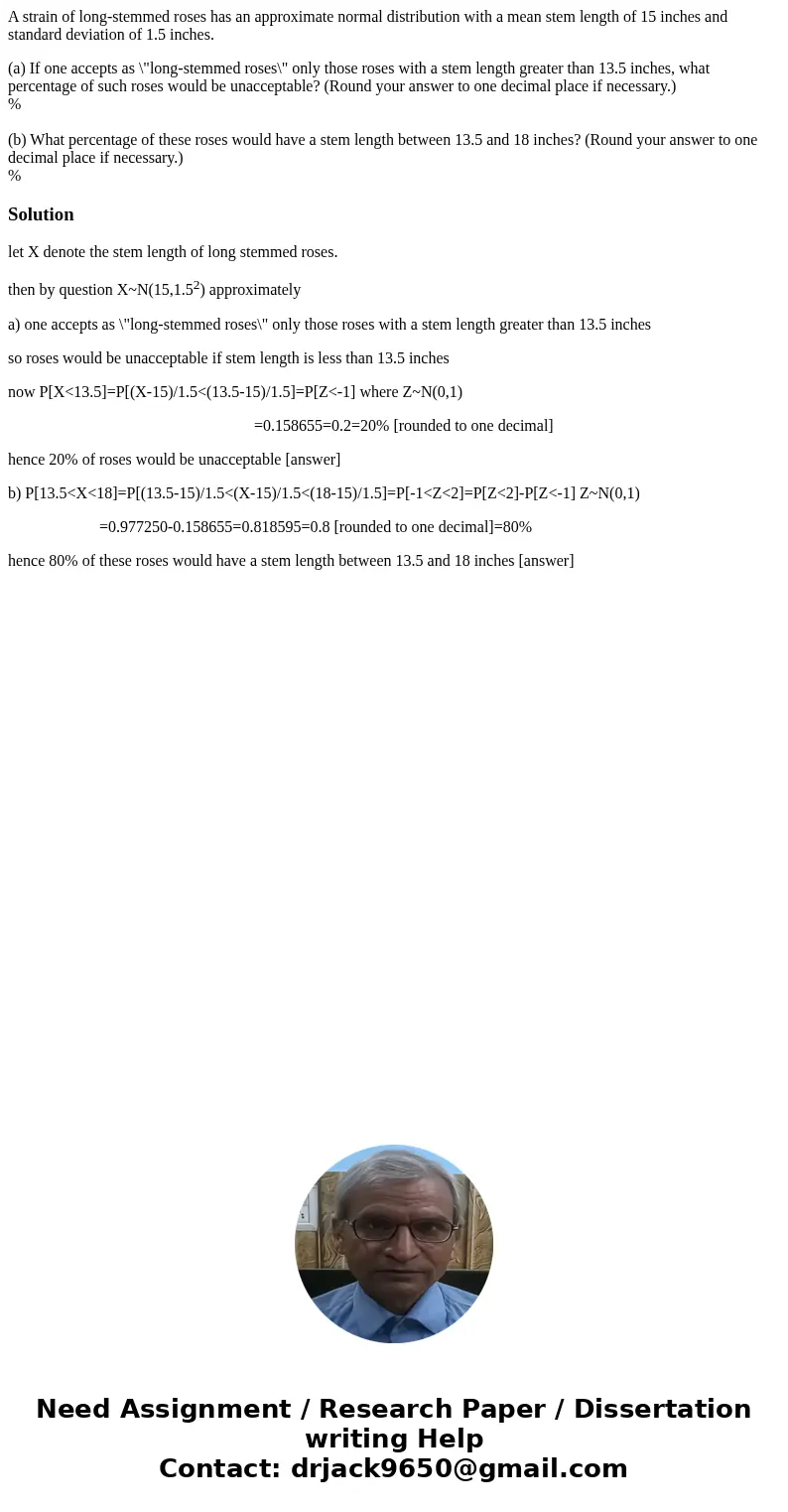A strain of longstemmed roses has an approximate normal dist
A strain of long-stemmed roses has an approximate normal distribution with a mean stem length of 15 inches and standard deviation of 1.5 inches.
(a) If one accepts as \"long-stemmed roses\" only those roses with a stem length greater than 13.5 inches, what percentage of such roses would be unacceptable? (Round your answer to one decimal place if necessary.)
%
(b) What percentage of these roses would have a stem length between 13.5 and 18 inches? (Round your answer to one decimal place if necessary.)
%
Solution
let X denote the stem length of long stemmed roses.
then by question X~N(15,1.52) approximately
a) one accepts as \"long-stemmed roses\" only those roses with a stem length greater than 13.5 inches
so roses would be unacceptable if stem length is less than 13.5 inches
now P[X<13.5]=P[(X-15)/1.5<(13.5-15)/1.5]=P[Z<-1] where Z~N(0,1)
=0.158655=0.2=20% [rounded to one decimal]
hence 20% of roses would be unacceptable [answer]
b) P[13.5<X<18]=P[(13.5-15)/1.5<(X-15)/1.5<(18-15)/1.5]=P[-1<Z<2]=P[Z<2]-P[Z<-1] Z~N(0,1)
=0.977250-0.158655=0.818595=0.8 [rounded to one decimal]=80%
hence 80% of these roses would have a stem length between 13.5 and 18 inches [answer]

 Homework Sourse
Homework Sourse